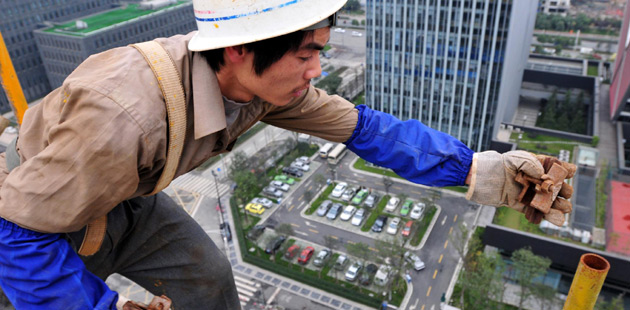Deadly school bus crashes reveal growing pains
Updated: 2011-12-13 19:50
(Xinhua)
|
|||||||||||
BEIJING - The second deadly school bus crash to occur in China in the past month has stoked public anger and revealed growing pains behind the country's rapidly expanding economy.
A Monday bus accident that claimed 15 young lives in east China's Jiangsu province happened just one day after a draft of new school bus safety rules was published for public scrutiny.
The high-profile regulations, prompted by Premier Wen Jiabao, give school buses right-of-way priority and spell out strict safety rules that ban overloading and cap maximum speeds at 60 km per hour.
The regulations, however, do not specify how much the government will spend on the buses, which has become a touchy issue for schools and parents in underdeveloped rural areas.
As a result of China's rapid urbanization drive, many rural children have followed their parents to cities. This has led to the closure and merging of village schools and forced children who still live in rural areas to travel up to 10 km to faraway schools.
In a circular on school reform issued at the end of last year, educational authorities in central China's Henan province said they would close down village schools with fewer than 30 first-graders.
Henan's city of Zhoukou alone plans to cut its primary schools from the current 3,789 to 1,582 by 2015, leaving just one primary school for every three villages in rural areas.
The authorities said the move was aimed at "improving the overall quality of schools" and "allocating resources in a more rational way."
The immediate consequences, however, include forcing children to get up at 6 am every day for a long and bumpy ride to school.
Of all the school bus accidents reported in the last five years, 74 percent of the victims were rural students in underdeveloped central and western regions.
A survey by the Ministry of Education showed that China has 180 million primary and middle school students, but only 285,000 school buses -- and only 10 percent of the buses are up to the technical standards for school buses issued by the government last year.
Last year, however, a legislator's proposal to the National People's Congress for safer school buses was rejected.
Zhou Hongyu, a deputy to the top legislature, proposed at the annual parliamentary session that school buses should be subsidized by the government and enjoy privileges on the road.
The Ministry of Education said Zhou's proposal would cost 450 billion yuan, including 300 billion yuan for procurement and 150 billion yuan in annual maintenance costs. It said the amount would be equal to one-third of China's annual spending on education and would be "far too large."
In most parts of rural China, it is also out of the question for schools to finance transportation, as many of them struggle with meager budges and have difficulties making ends meet.
Researcher Li Lan with the Chinese Academy of Social Sciences said the government should play a vital role in ensuring school bus safety.
"The government should coordinate with relevant departments, such as traffic and education authorities, to make school buses safe and affordable for children," Li said.
Professor Yuan Guilin from Beijing Normal University said the government should actively work to raise funds from other sources and create policy support to ensure the smooth and safe operation of school buses.
Hot Topics
HIV/AIDS, Egypt protest, Thanksgiving, climate change, global economic recovery, home prices, high-speed railways, school bus safety, Libya situation, Weekly photos
Editor's Picks

|

|

|

|

|

|







